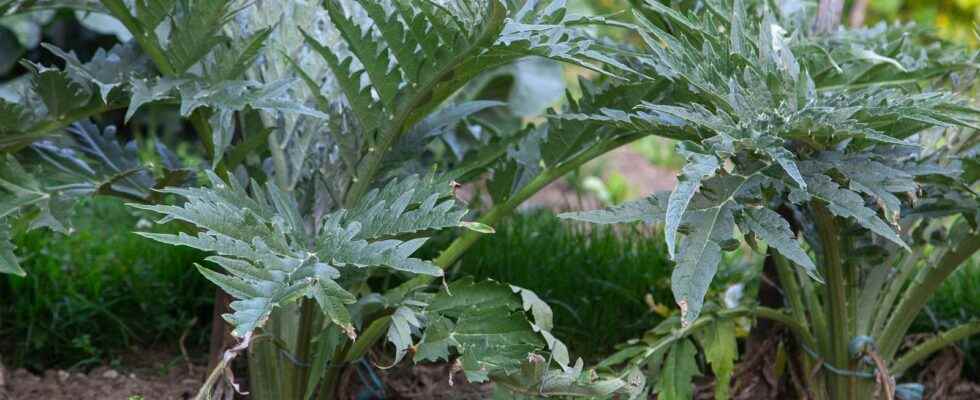This ancient leaf vegetable is too little grown in vegetable gardens. In addition to its large, very cut and graphic leaves, silver gray, which bring an ornamental touch to the vegetable garden, the white ribs, which are at the heart of the plant, are very popular, once cooked. Vegetable to discover or rediscover!
Cardoon season
Cardoon (Cynara cardunculus) is a vegetable perennial native to the Mediterranean basin and which is part of the Asteraceae family (Asteraceae). Also called wild artichoke or chard, it is appreciated for its artichoke taste. Exhibited at Sun, prepare the soil so that it is as loose as possible. Plan a fairly large space because a foot of cardoon can reach more than two meters in wingspan.
From the month of May, sow the seeds, in pockets (3 to 4 seeds per hole) directly in place in the vegetable patch. It is possible to anticipate sowing in buckets, placed under cover, from April. Space each hole one meter in all directions. Hoe the soil regularly to remove the weeds and break the crust superior. Cardoons appreciate fresh soil so do not hesitate to mulch the feet. Water to keep the soil cool.
From spring to summer, certain stems produce purple flowers, which are very decorative in the garden and very popular with pollinating insects. Cut them because the foot may become exhausted by developing these inflorescences. You can save some to dry and produce seed for the next year.
In the month of Septemberyou will need to blanch the ribs, also called petioles, cardoons before harvesting them. This step makes it possible to deprive the ribs of the light to obtain more tender and less bitter ribs. To do this, make a bundle of leaves, wrap it in burlap or cardboard and tie it all together with string for at least a month. Harvest the cardoon ribs in this way until winter because this vegetable can withstand temperatures down to -10°C. With a sharp knife, cut the leaves at the base.
Cardoon nutritional qualities
The fleshy ribs of cardoons are rich in fiber and contain vitamins B as well as calcium.
Cardoon varieties
Depending on the variety, cardoons have more or less large, spiny and cut leaves.
- ‘Improved White’: white-ribbed, spineless;
- ‘Epineux Argenté de Plainpalais’: with thorny white ribs;
- ‘Giant of Romagna’: white-ribbed, not very spiny;
- ‘Plein Blanc Inerme’: white ribs, not very spiny;
- ‘Plein Vert Inerme’: with green ribs, not very spiny.
Storing and cooking cardoon
Between sowing and harvesting, you will have to wait about 5 months to pick them. The winter harvest has come, peel the ribs and cook them quickly or keep them for 2 to 5 days, at the bottom of the fridge. Once blanched in a pan of boiling water, the chard is eaten au gratin with a bechamel sauce or as an accompaniment to meat.
You will also be interested
Interested in what you just read?
